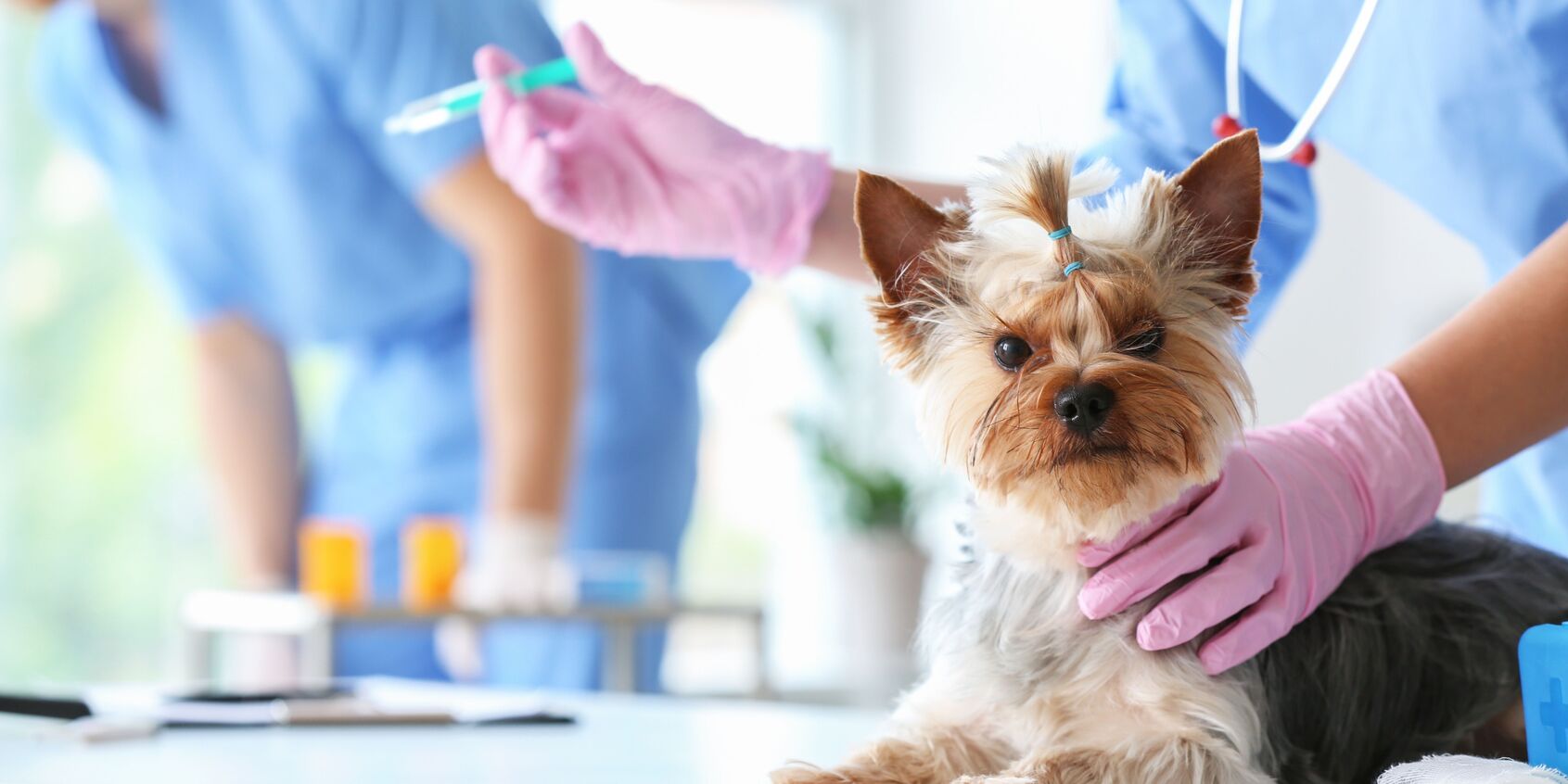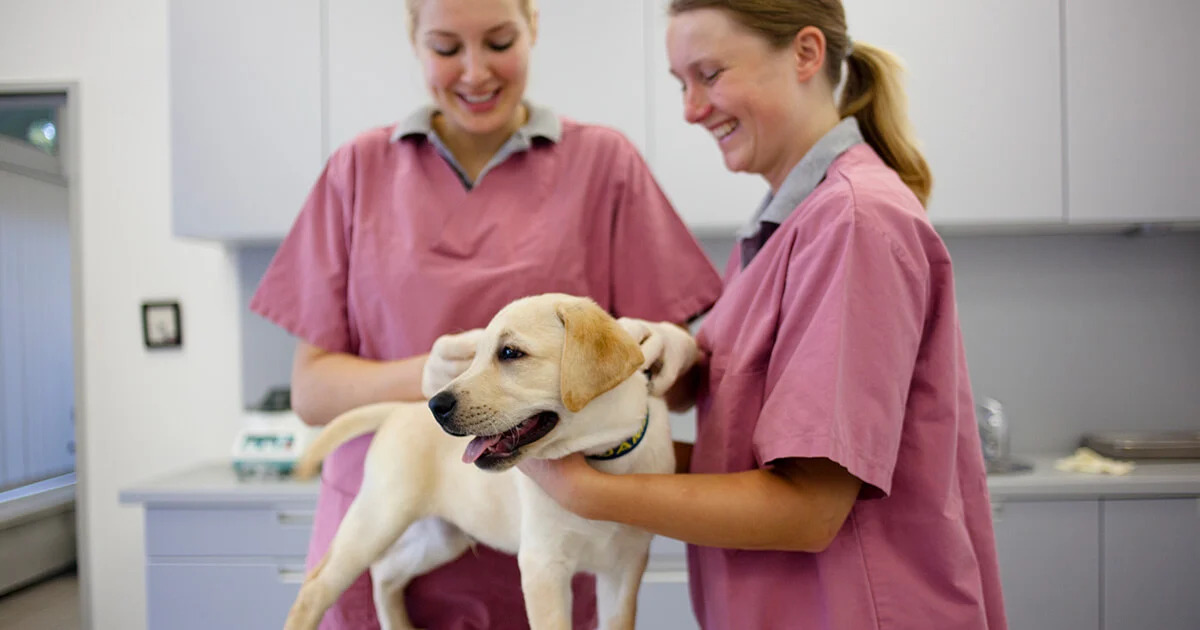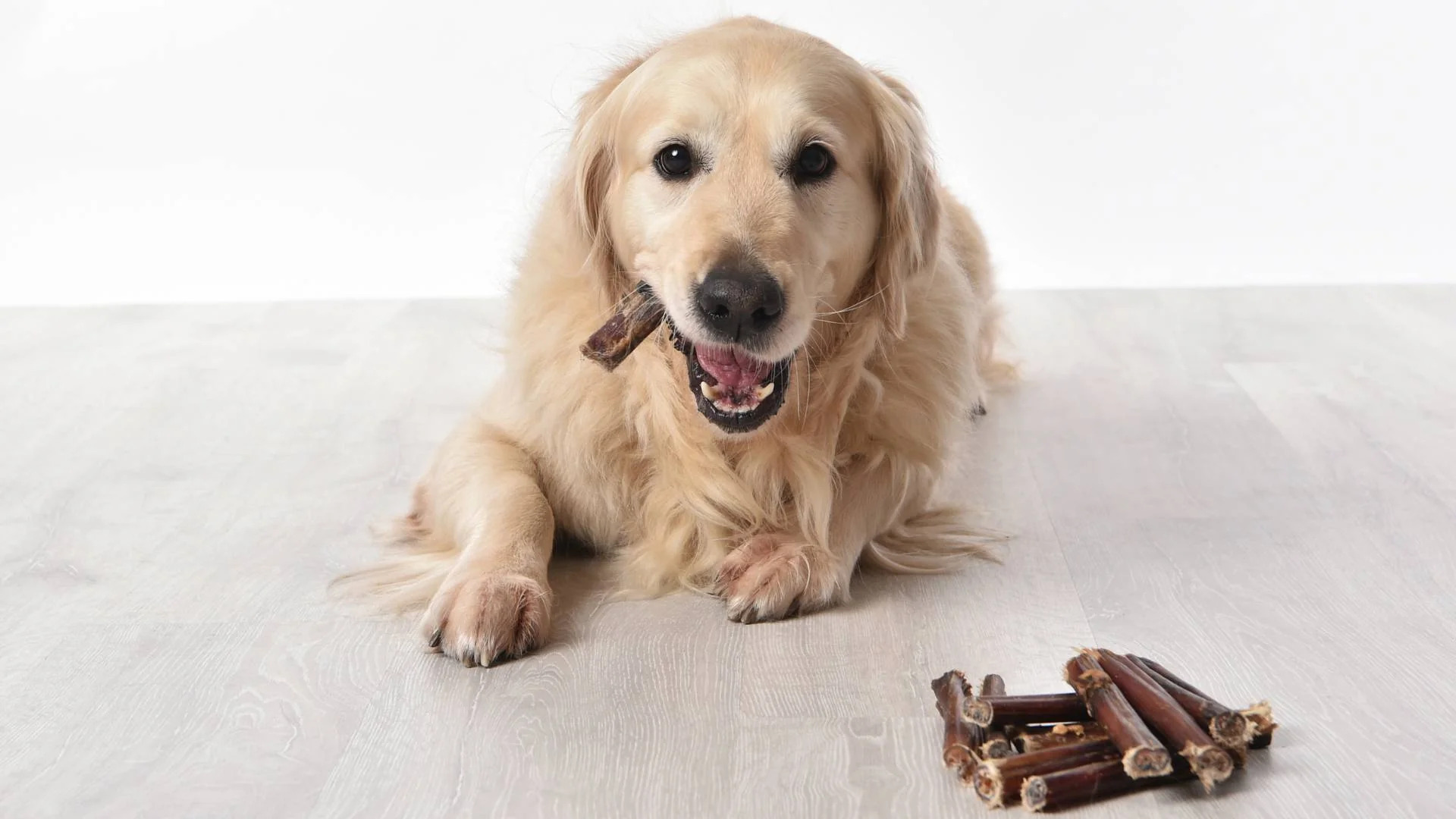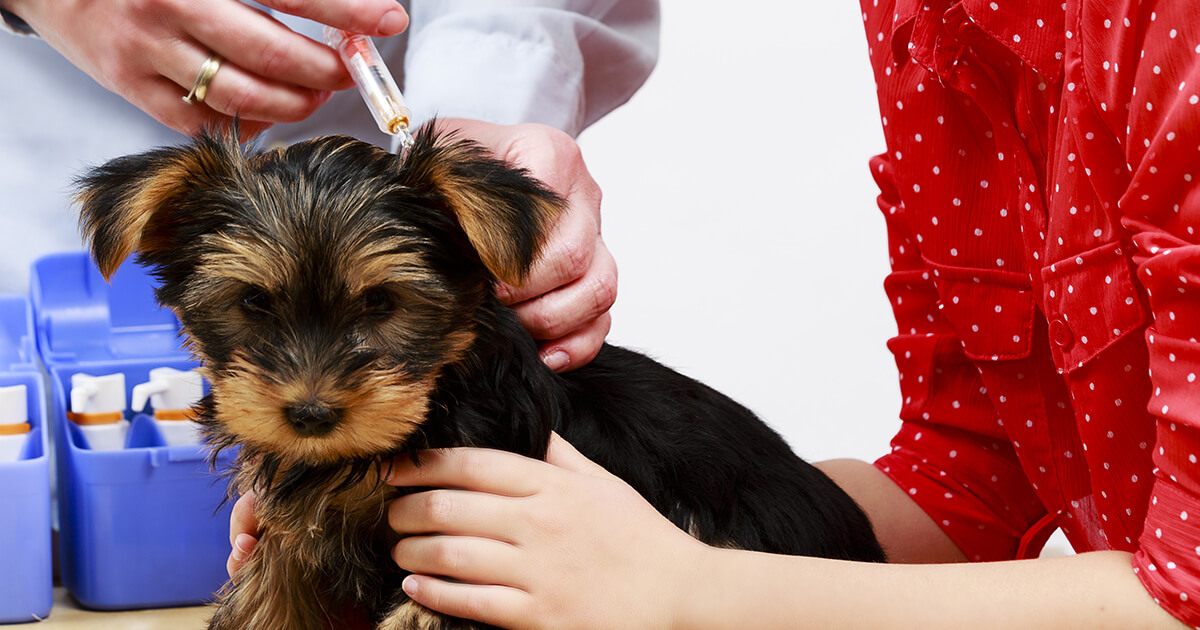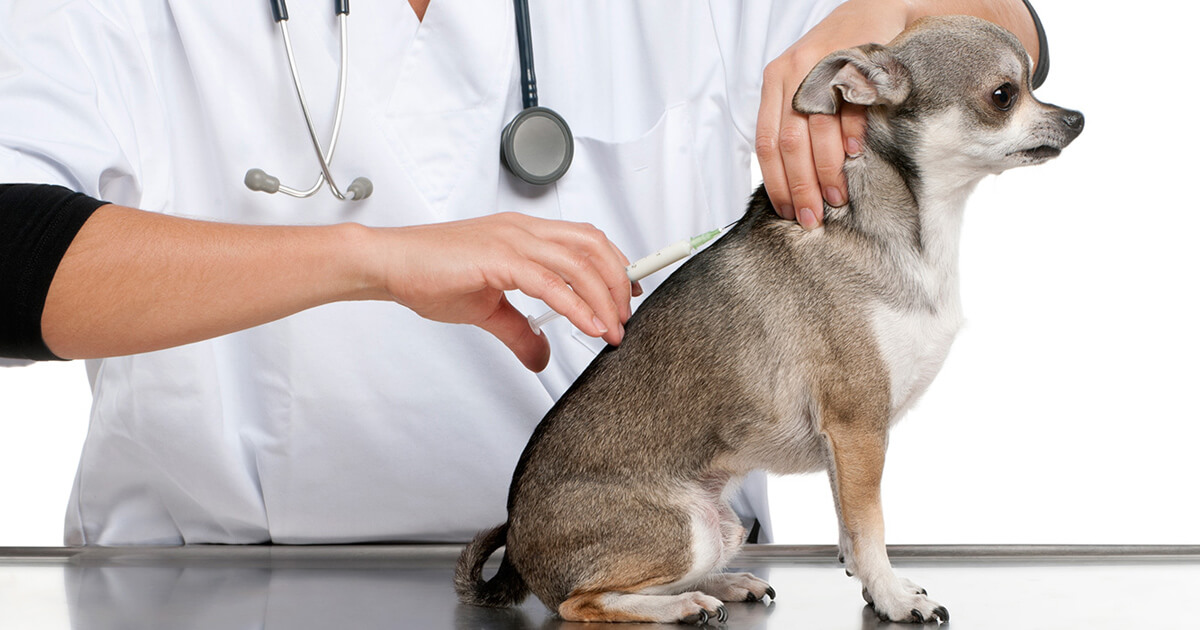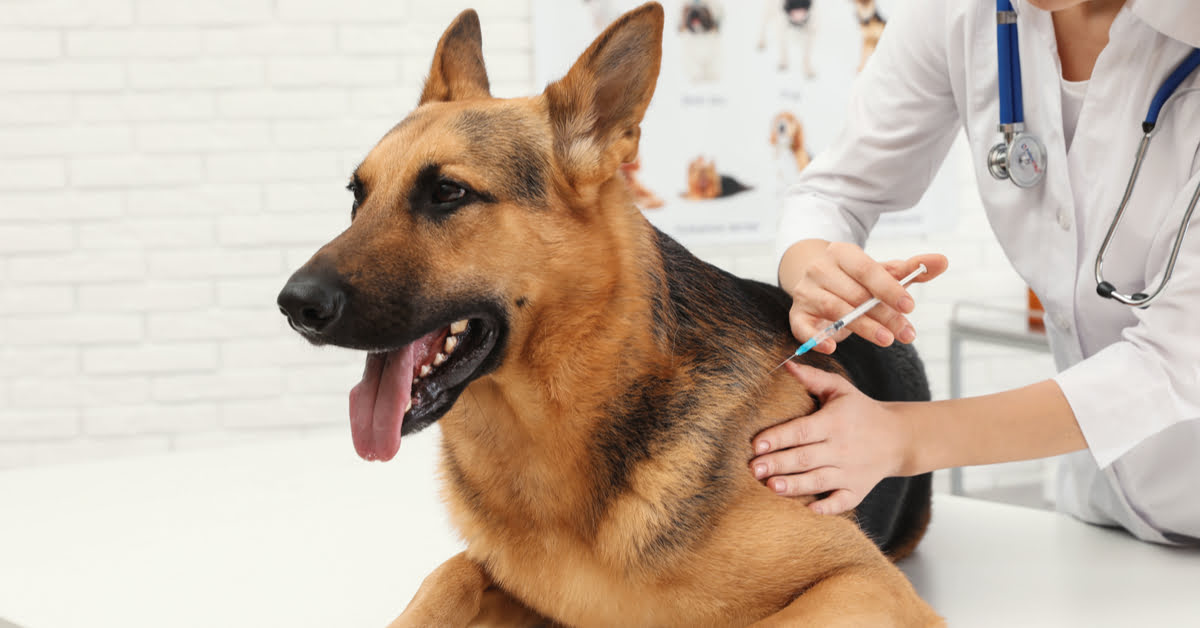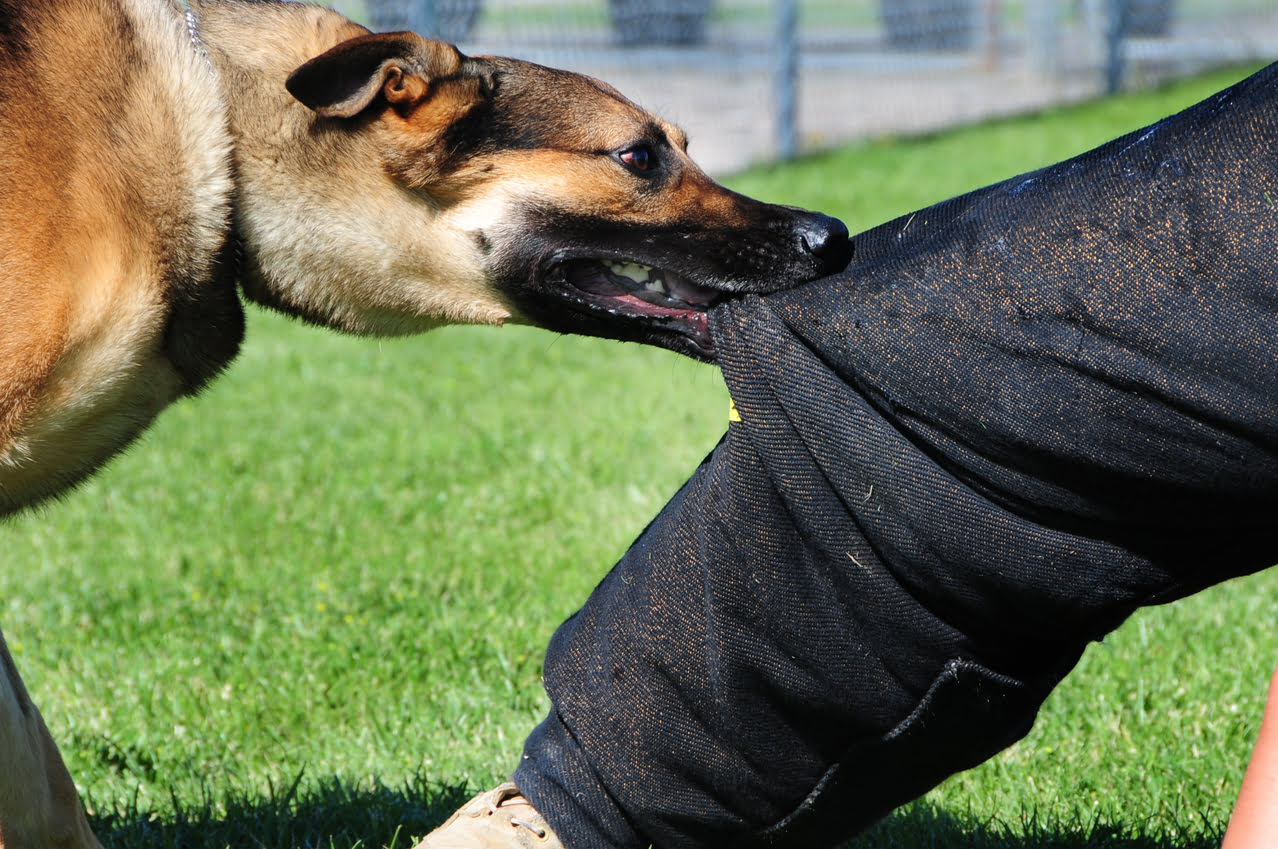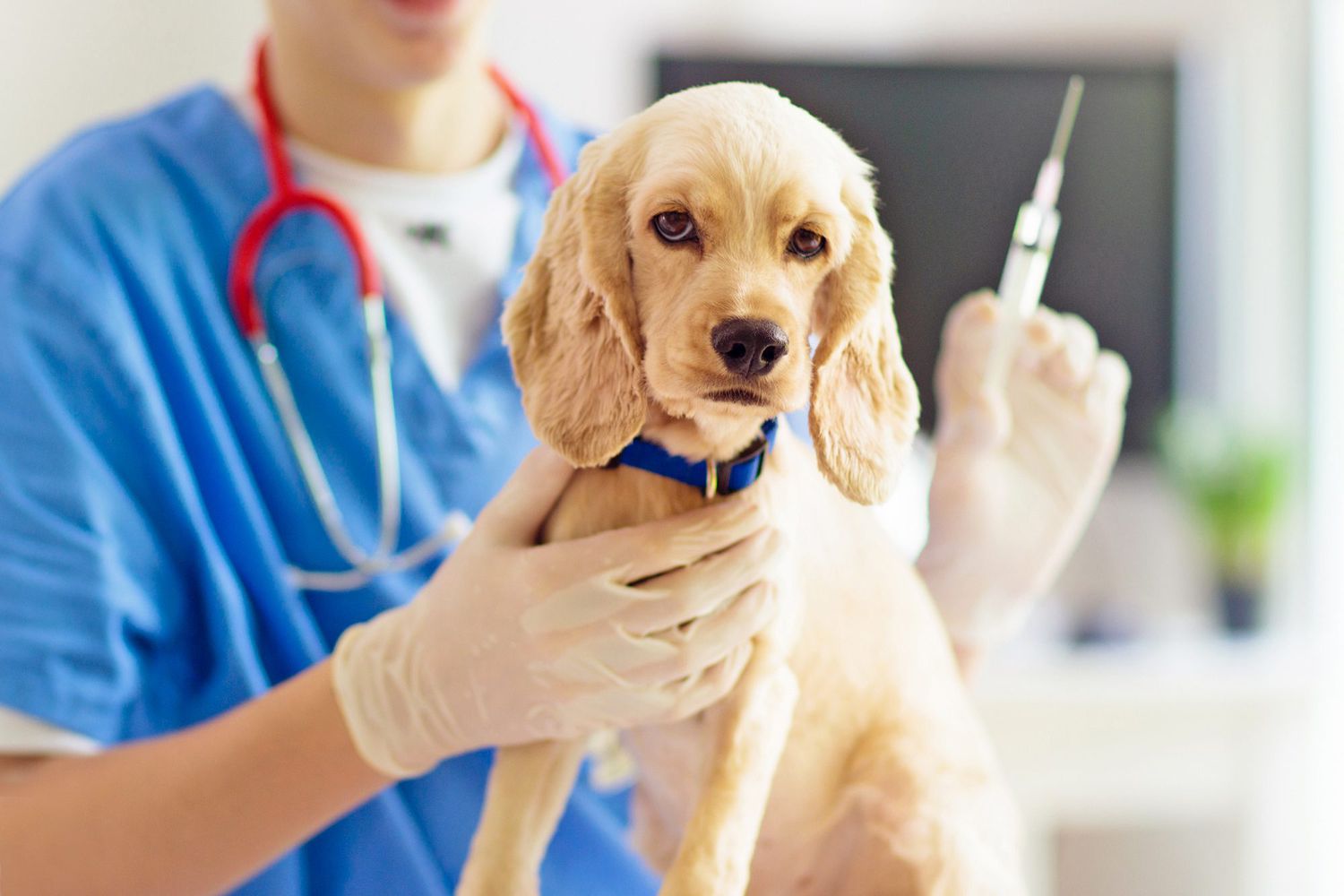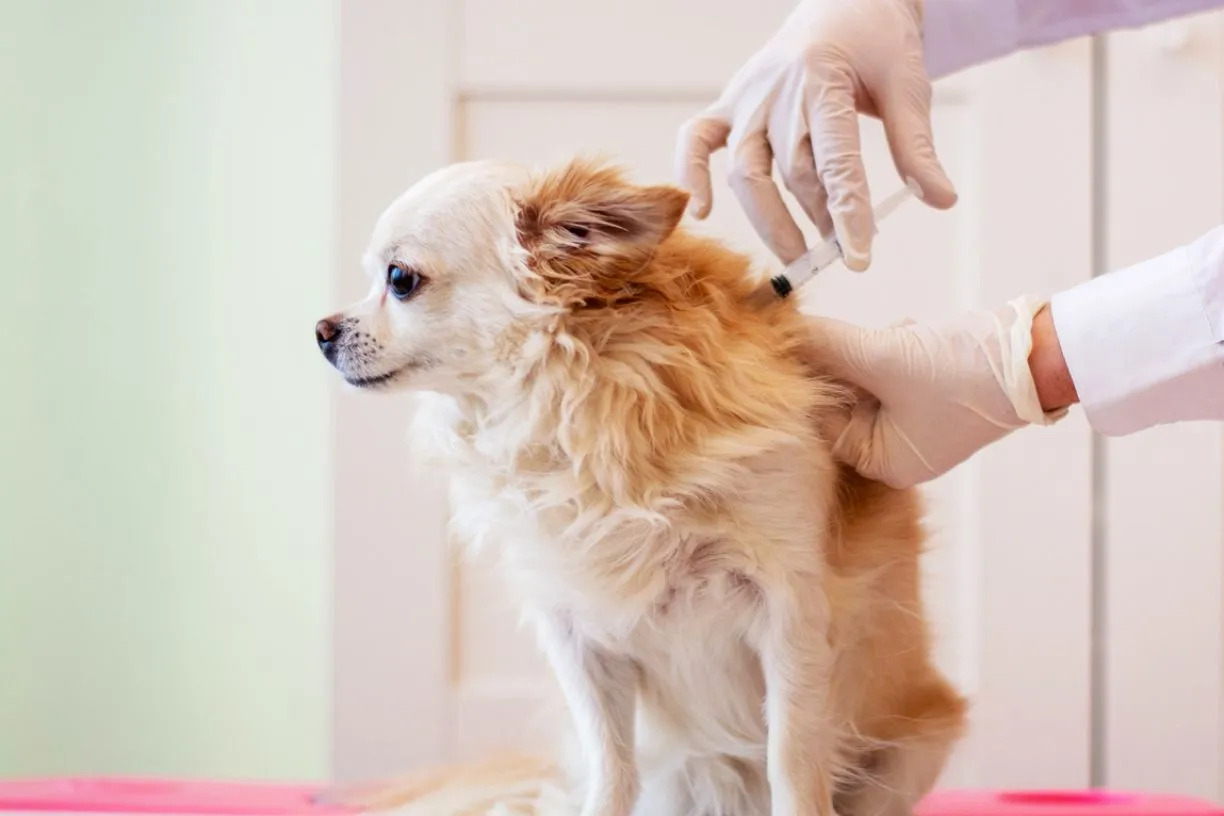Home>Health & Wellness>Common Health Issues>How To Give Dogs Vaccinations
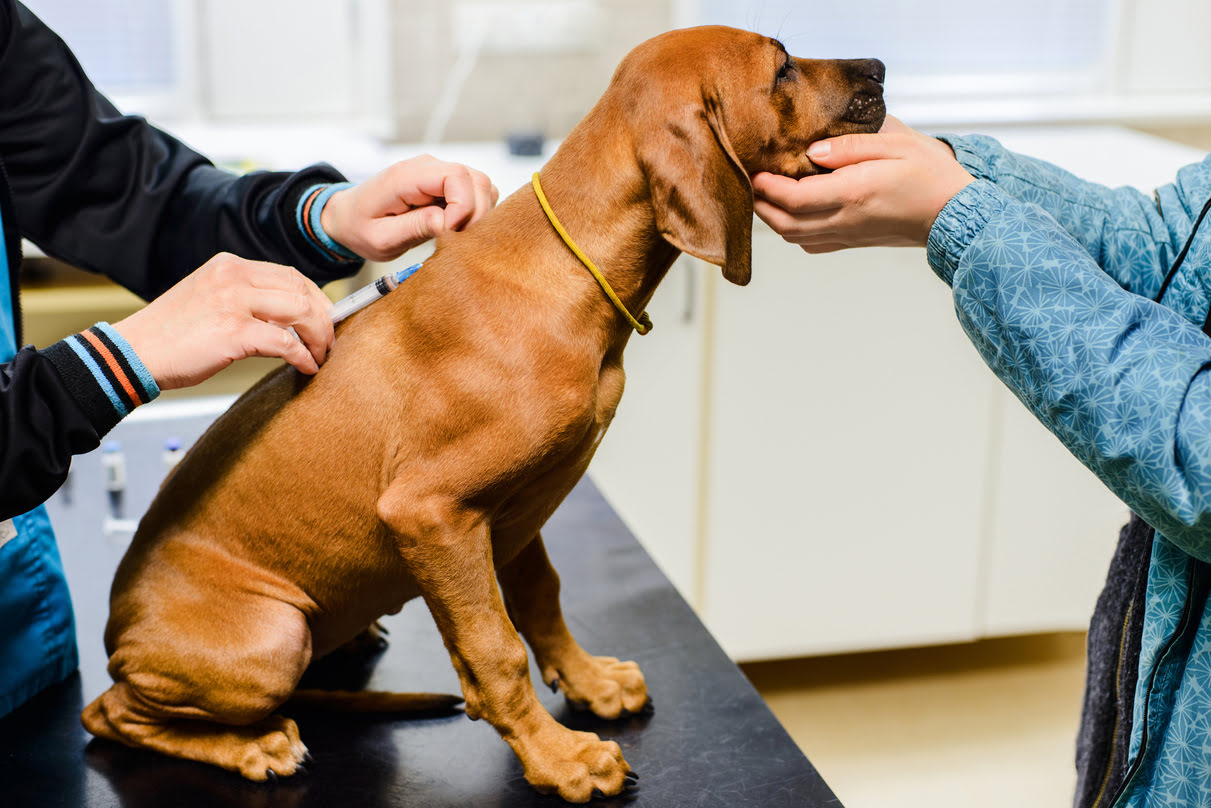

Common Health Issues
How To Give Dogs Vaccinations
Published: February 2, 2024
Learn how to give dogs vaccinations and protect them from common health issues. Follow our guide to keep your furry friend healthy and happy.
(Many of the links in this article redirect to a specific reviewed product. Your purchase of these products through affiliate links helps to generate commission for Pawsomeoldies.com, at no extra cost. Learn more)
Table of Contents
Introduction
Vaccinations play a crucial role in safeguarding the health and well-being of our canine companions. Just like humans, dogs require vaccinations to protect them from various diseases and ensure a long, healthy life. As responsible pet owners, it is our duty to understand the significance of vaccinations and take proactive measures to keep our furry friends safe.
In this comprehensive guide, we will delve into the essential aspects of giving vaccinations to dogs. From understanding the importance of vaccinations to the step-by-step process of administering them, this article aims to equip dog owners with the knowledge and confidence to ensure their pets receive the necessary immunizations.
By gaining a deeper understanding of dog vaccinations, you will not only contribute to your pet's overall health but also play a pivotal role in preventing the spread of infectious diseases within the canine community. So, let's embark on this enlightening journey to learn how to give dogs vaccinations and become proactive advocates for the well-being of our beloved four-legged companions.
Read more: How Far Between Shots Of Dog Vaccination
Understanding Dog Vaccinations
Vaccinations are a fundamental aspect of responsible pet ownership, serving as a proactive measure to protect dogs from potentially life-threatening diseases. These immunizations work by stimulating the immune system to produce antibodies, which are essential for fighting off specific viruses and bacteria. By understanding the significance of dog vaccinations, pet owners can make informed decisions regarding their canine companions' health.
Importance of Vaccinations
Vaccinations are designed to prevent a range of infectious diseases that can pose serious health risks to dogs. These diseases include rabies, distemper, parvovirus, adenovirus, and leptospirosis, among others. Without proper immunization, dogs are vulnerable to contracting these illnesses, which can lead to severe symptoms, long-term health complications, and, in some cases, fatalities.
Vaccination Schedule
Understanding the vaccination schedule is crucial for ensuring that dogs receive the necessary immunizations at the right time. Puppies typically start their vaccination series at around six to eight weeks of age, with additional doses administered every three to four weeks until they are around 16 weeks old. Booster shots are then required at regular intervals to maintain immunity throughout the dog's life.
Types of Vaccines
There are various types of vaccines designed to protect dogs from specific diseases. Core vaccines, such as those for rabies, distemper, parvovirus, and adenovirus, are considered essential for all dogs due to the widespread threat posed by these diseases. Non-core vaccines, on the other hand, are recommended based on factors such as the dog's lifestyle, geographic location, and individual health risks.
Risks and Benefits
While vaccinations offer invaluable protection, it's essential to be aware of potential risks and benefits. Vaccines can occasionally cause mild side effects, such as soreness at the injection site or temporary lethargy. However, the benefits of immunization far outweigh these minor and short-lived effects, as they significantly reduce the risk of dogs contracting serious and potentially fatal diseases.
By comprehending the significance of dog vaccinations, pet owners can actively contribute to their pets' well-being and the broader community's health. This understanding empowers dog owners to make informed decisions regarding their pets' vaccination needs, ultimately ensuring that their furry companions lead long, healthy, and disease-free lives.
Preparing for Vaccinating Your Dog
Before administering vaccinations to your dog, it's crucial to adequately prepare to ensure a smooth and stress-free experience for both you and your furry companion. Proper preparation involves several essential steps that contribute to the effectiveness and safety of the vaccination process.
Schedule a Veterinary Appointment
Initiate the preparation process by scheduling a veterinary appointment. Professional guidance from a qualified veterinarian is indispensable for determining the specific vaccinations required for your dog based on factors such as age, lifestyle, and geographic location. Additionally, the veterinarian will assess your dog's overall health and address any concerns or questions you may have regarding the vaccination process.
Gather Necessary Supplies
Ensure that you have all the necessary supplies on hand before vaccinating your dog. This includes the appropriate vaccines as recommended by the veterinarian, syringes, alcohol swabs for sterilization, and bandages in case of minor bleeding at the injection site. Having these supplies readily available will streamline the vaccination process and minimize any potential disruptions.
Read more: How To Get Proof Of Dog Vaccinations
Create a Comfortable Environment
Creating a comfortable and familiar environment for your dog is essential for minimizing stress and anxiety during the vaccination process. Choose a quiet and well-lit area where your dog feels at ease, such as a familiar room or outdoor space. By reducing environmental stressors, you can help your dog remain calm and cooperative during the vaccination procedure.
Familiarize Your Dog with Handling
Familiarize your dog with gentle handling and touch to acclimate them to the sensation of being touched and restrained. This can be achieved through positive reinforcement and gentle handling exercises, such as gently touching and massaging your dog's body, paws, and ears. By doing so, you can help your dog become more comfortable with the physical aspects of the vaccination process.
Maintain a Calm Demeanor
As a pet owner, your demeanor and energy greatly influence your dog's emotional state. Maintaining a calm and reassuring demeanor throughout the preparation process can help alleviate any anxiety or apprehension your dog may experience. By projecting a sense of calm and confidence, you can positively influence your dog's behavior and overall experience during the vaccination procedure.
By diligently preparing for the vaccination process, you can create a conducive and stress-free environment for your dog, ultimately contributing to a successful and positive vaccination experience. This preparation not only ensures the safety and well-being of your furry companion but also strengthens the bond between you and your dog through trust and reassurance.
Administering the Vaccination
Administering the vaccination is a critical step in ensuring the health and well-being of your dog. It requires precision, care, and a gentle approach to minimize discomfort and maximize the effectiveness of the immunization. By following the recommended guidelines and techniques, you can confidently administer the vaccination to your dog in a safe and efficient manner.
Read more: How Much Is A Dog Vaccination In The UK
Step-by-Step Process
-
Preparation: Begin by assembling all the necessary supplies, including the vaccine vial, syringe, alcohol swabs, and bandages. Ensure that the vaccine is stored and handled according to the manufacturer's instructions to maintain its potency.
-
Sterilization: Thoroughly sterilize the injection site using an alcohol swab to minimize the risk of infection. This step is crucial for preventing any contaminants from entering the dog's body during the vaccination process.
-
Restraint: Gently restrain your dog in a comfortable and secure manner to prevent sudden movements that could disrupt the vaccination process. This can be achieved by having a trusted individual assist in holding the dog or by using gentle restraints to ensure stability.
-
Injection: Carefully draw the appropriate dosage of the vaccine into the syringe, ensuring accuracy and precision. Choose the injection site as recommended by the veterinarian, typically the scruff of the neck or the thigh muscle, and administer the vaccine with a steady and controlled hand.
-
Comfort and Reassurance: Throughout the vaccination process, provide verbal reassurance and gentle physical contact to comfort your dog. Your soothing presence can help alleviate any temporary discomfort and create a sense of security for your furry companion.
-
Post-Vaccination Care: After administering the vaccine, monitor your dog for any immediate adverse reactions, such as swelling or excessive discomfort. Provide a comfortable and quiet space for your dog to rest and recover, minimizing physical activity for the remainder of the day.
Professional Guidance
While administering vaccinations at home is feasible for some pet owners, it's important to note that certain vaccines, such as the rabies vaccine, may require administration by a licensed veterinarian due to legal regulations. Additionally, seeking professional guidance ensures that the vaccination process adheres to best practices and safety protocols, ultimately safeguarding your dog's health.
By following the step-by-step process and considering professional guidance when necessary, you can effectively administer vaccinations to your dog, contributing to their long-term health and immunity. This proactive approach not only protects your furry companion from preventable diseases but also fosters a sense of trust and security between you and your dog.
Aftercare and Monitoring
After administering vaccinations to your dog, diligent aftercare and monitoring are essential to ensure their well-being and detect any potential adverse reactions. This phase of the vaccination process involves attentive observation, providing comfort, and taking proactive measures to support your dog's recovery.
Immediate Observation
Immediately after the vaccination, observe your dog for any signs of immediate adverse reactions. These may include swelling at the injection site, mild discomfort, or behavioral changes. While it's normal for dogs to experience mild soreness or lethargy following vaccinations, any concerning symptoms should be noted and addressed promptly.
Read more: How To Give A Dog Massage For Arthritis
Rest and Comfort
Create a calm and comfortable environment for your dog to rest and recuperate. Minimize physical activity for the remainder of the day to allow the immune system to respond to the vaccine without undue stress. Providing a cozy and familiar space for your dog to relax can contribute to their overall comfort and well-being.
Hydration and Nutrition
Ensure that your dog has access to fresh water and encourage them to stay hydrated. Additionally, offer a small, palatable meal to support their energy levels and aid in the recovery process. Maintaining proper hydration and nutrition is crucial for supporting the immune system's response to the vaccination.
Monitoring for Adverse Reactions
In the hours and days following the vaccination, continue to monitor your dog for any delayed adverse reactions. These may include persistent swelling, excessive lethargy, loss of appetite, or unusual behavioral changes. If you observe any concerning symptoms, promptly contact your veterinarian for guidance and evaluation.
Follow-Up Care
Depending on the specific vaccine administered, your veterinarian may recommend a follow-up appointment to assess your dog's response to the vaccination. This may involve a brief check-up to ensure that the immunization was well-tolerated and to address any lingering concerns or questions.
Read more: How Long Does A Dog Vaccination Last
Long-Term Immunity
Understanding that vaccinations provide long-term immunity is crucial for maintaining your dog's health. Keep a record of the vaccinations administered, including the dates and types of vaccines, to ensure that your dog receives timely booster shots as recommended by the veterinarian. This proactive approach contributes to sustained immunity against preventable diseases.
By prioritizing aftercare and monitoring following the vaccination, you demonstrate a commitment to your dog's well-being and health. This attentive approach not only supports your dog's recovery but also strengthens the bond between you and your furry companion, fostering a sense of trust and security in their time of need.
